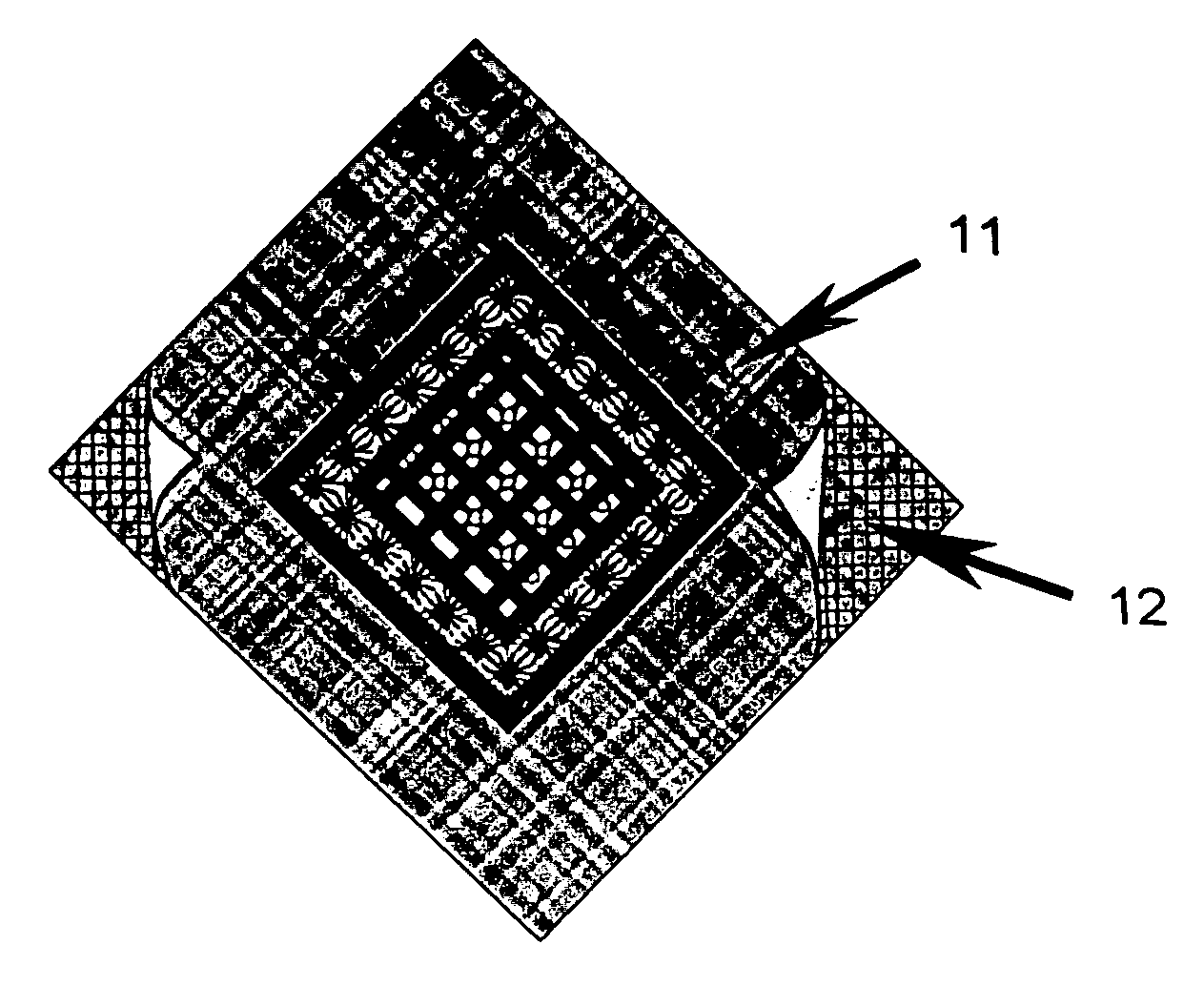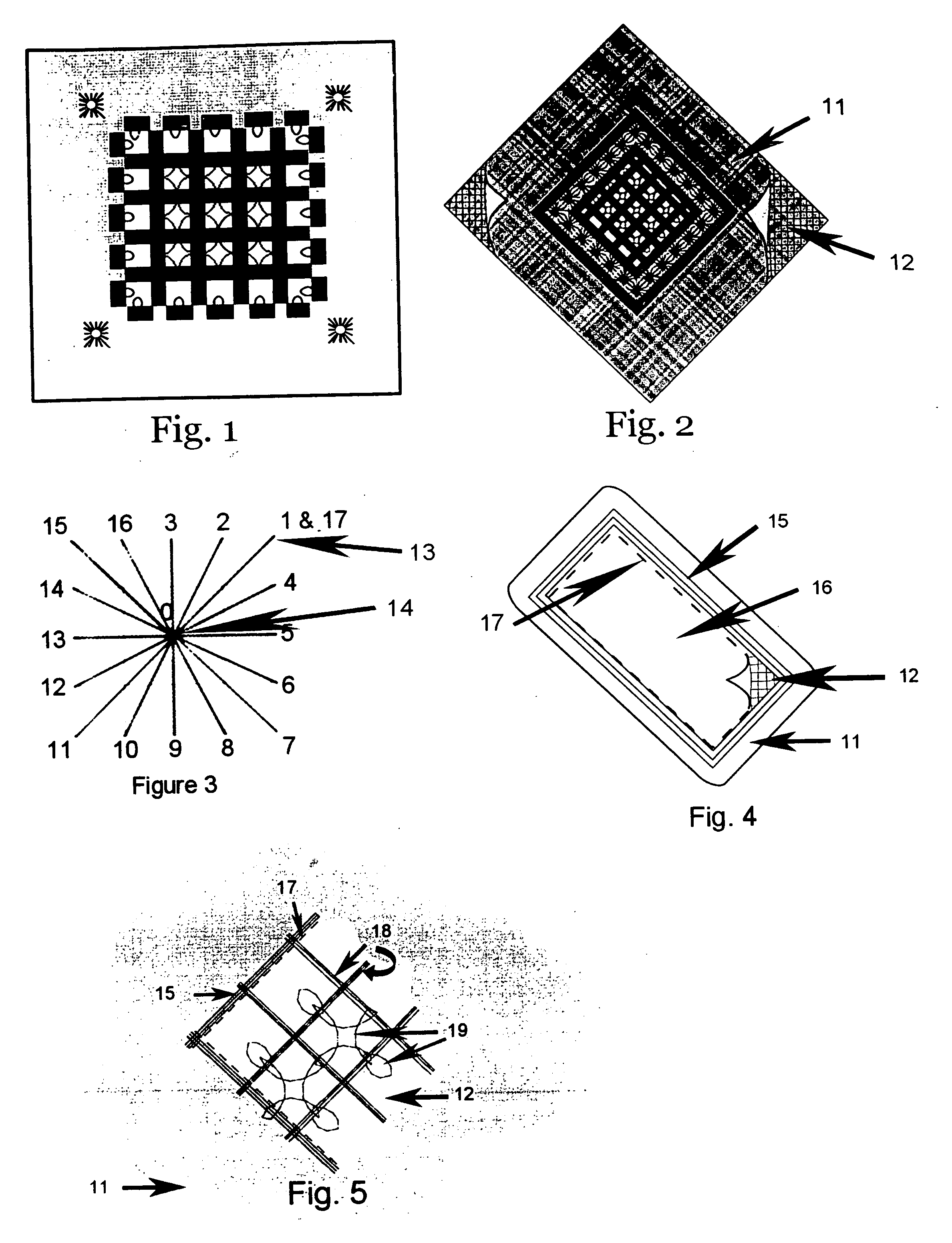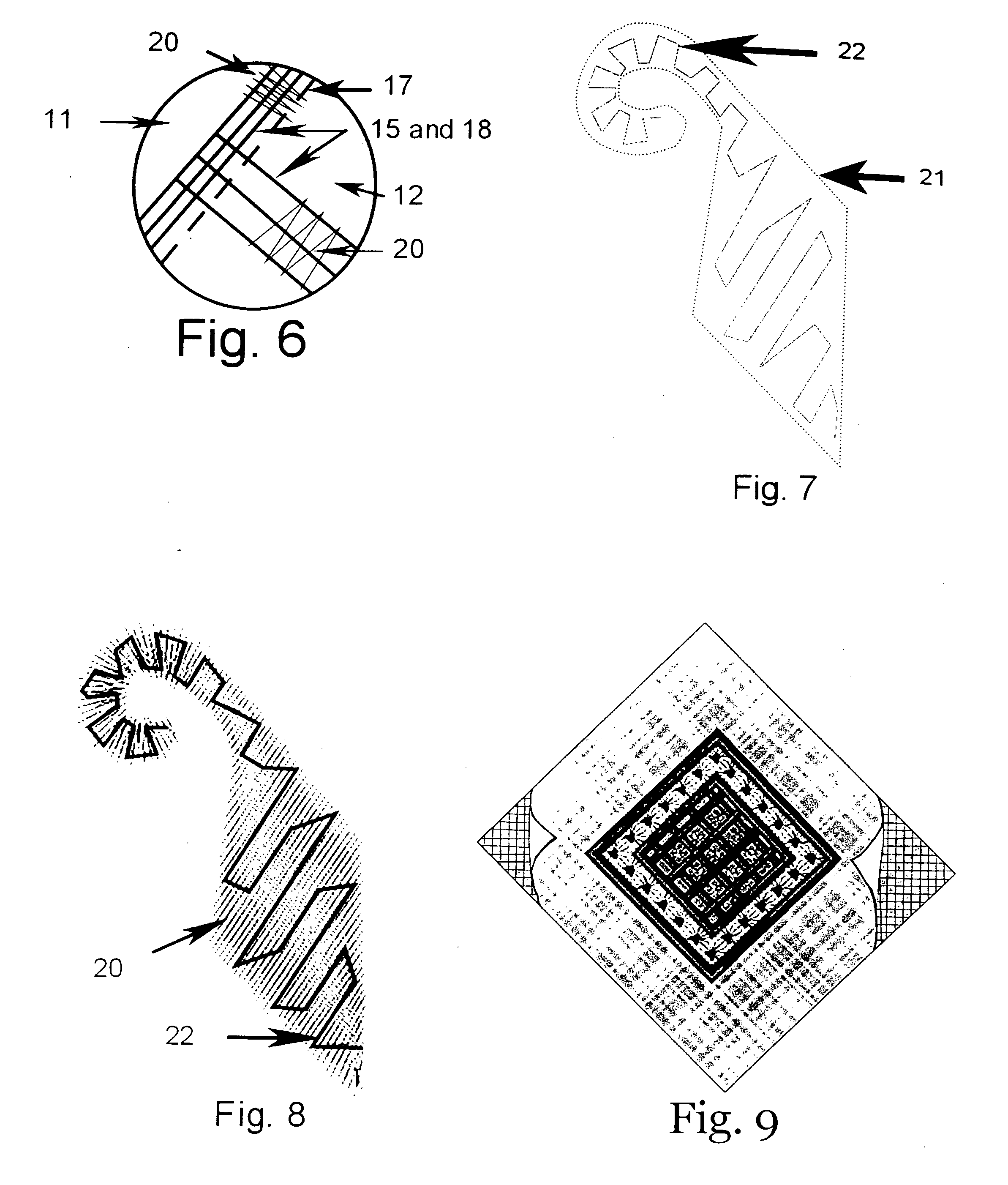Hardanger machine embroidery and method
a hardanger machine and embroidery technology, applied in the field of embroiderie, can solve the problems of many days for each design, high cost of buying, and time-consuming hand stitching, and achieve the effect of duplicate the appearance of hand stitched hardanger embroidery
- Summary
- Abstract
- Description
- Claims
- Application Information
AI Technical Summary
Benefits of technology
Problems solved by technology
Method used
Image
Examples
Embodiment Construction
[0039] For purposes of describing the preferred embodiment, the terminology used in the reference to the numbered components in the drawing is as follows: [0040] 11. fabric [0041] 12. removable stabilizer [0042] 13. first stitch point in the hardanger embroidery eyelet stitch pattern [0043] 14. second stitch point in the hardanger embroidery eyelet stitch pattern [0044] 15. sets of concentric underlay stitch lines [0045] 16. cutwork section [0046] 17. fabric cut line [0047] 18. set of intersecting underlay stitch lines [0048] 19. lace fill stitches [0049] 20. finishing stitches [0050] 21. boundary outline of motif stitch pattern [0051] 22. underlay stitch patterns
[0052] Referring now to the drawings, FIG. 1 shows traditional hardanger embroidery design performed by hand stitching, which uses only one layer of low thread count, even weave fabric. Achieving hardanger embroidery effect by hand stitching is accomplished by using a hand-stitching needle to stitch in place threads parall...
PUM
 Login to View More
Login to View More Abstract
Description
Claims
Application Information
 Login to View More
Login to View More - R&D
- Intellectual Property
- Life Sciences
- Materials
- Tech Scout
- Unparalleled Data Quality
- Higher Quality Content
- 60% Fewer Hallucinations
Browse by: Latest US Patents, China's latest patents, Technical Efficacy Thesaurus, Application Domain, Technology Topic, Popular Technical Reports.
© 2025 PatSnap. All rights reserved.Legal|Privacy policy|Modern Slavery Act Transparency Statement|Sitemap|About US| Contact US: help@patsnap.com



